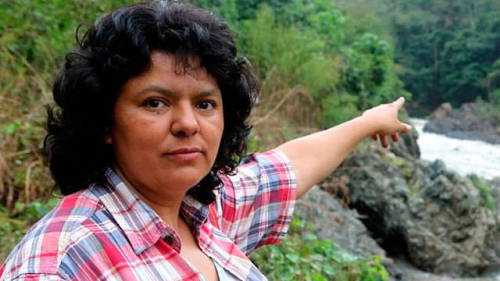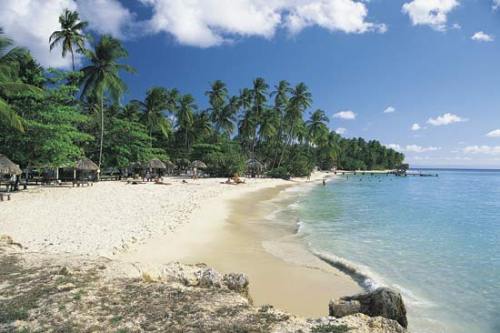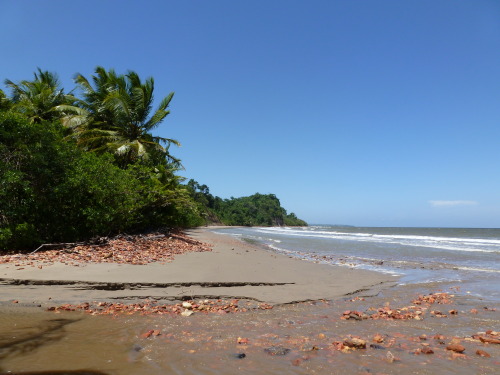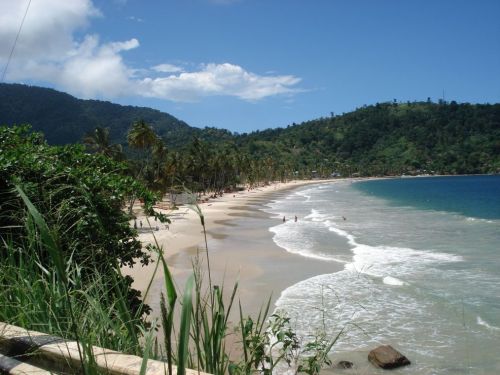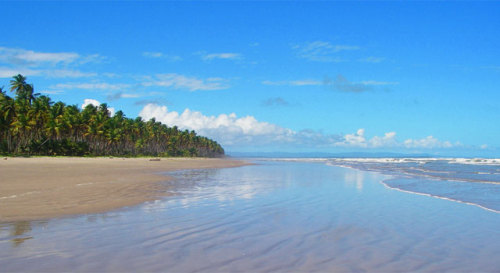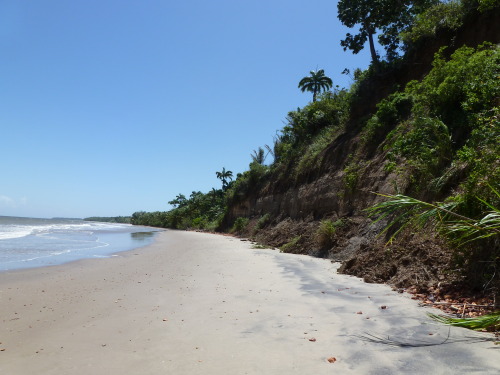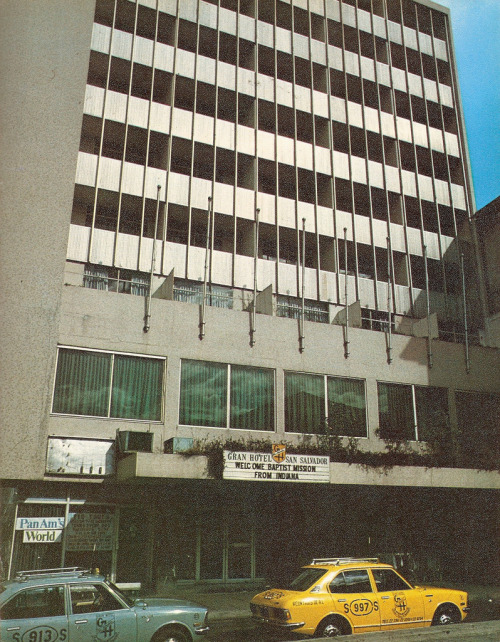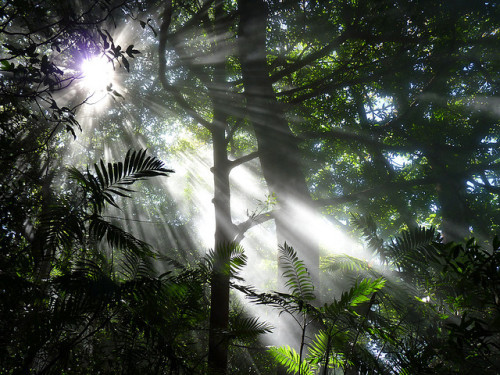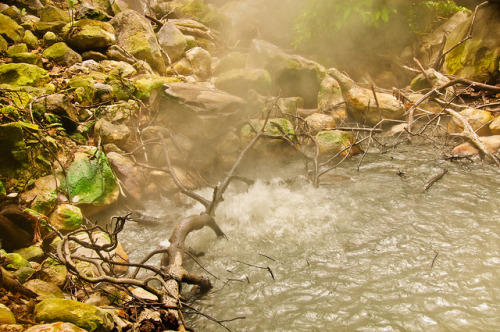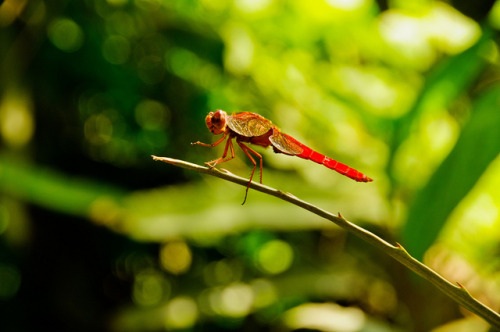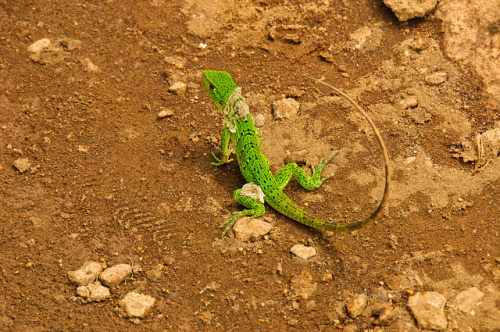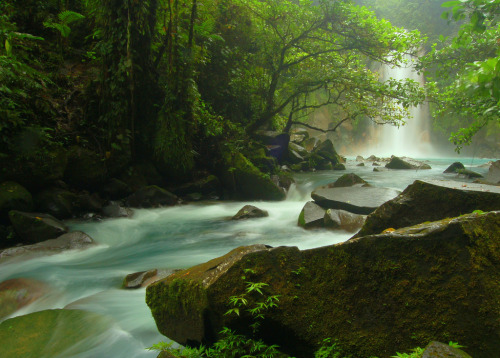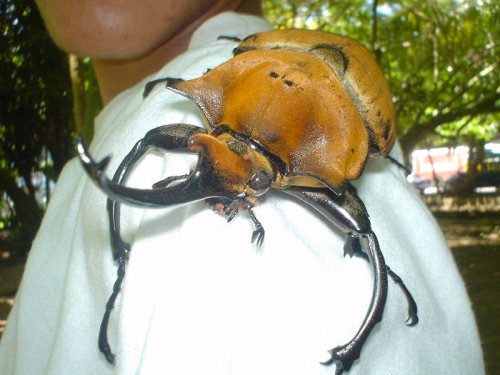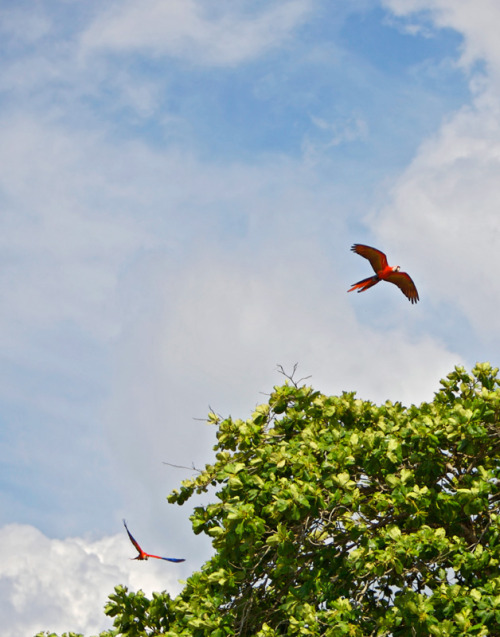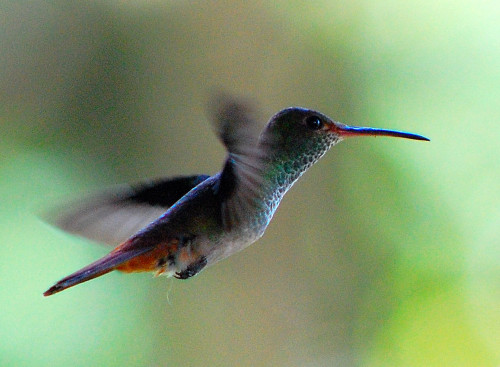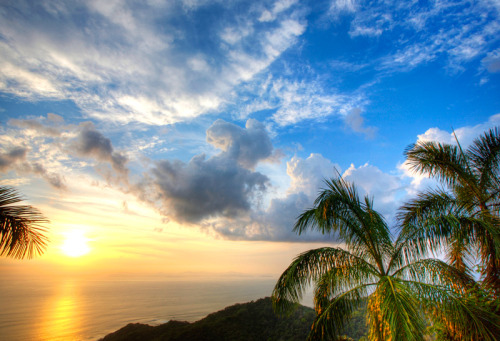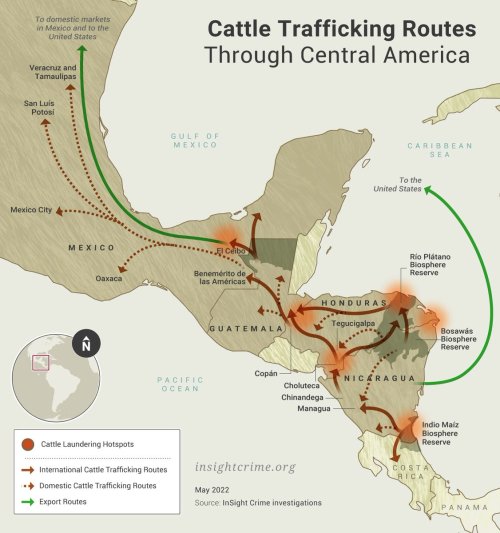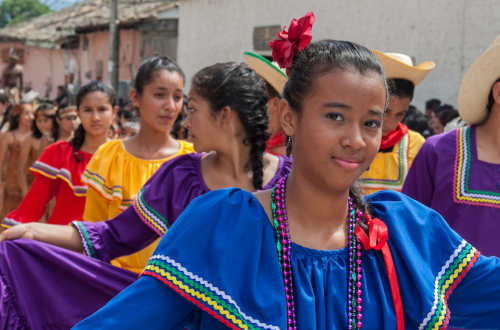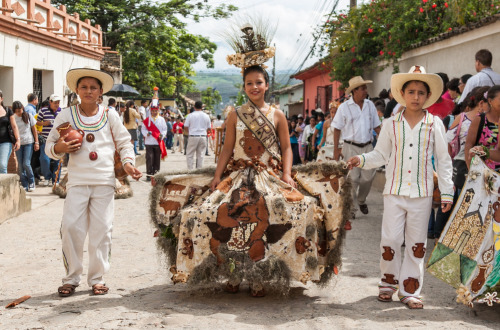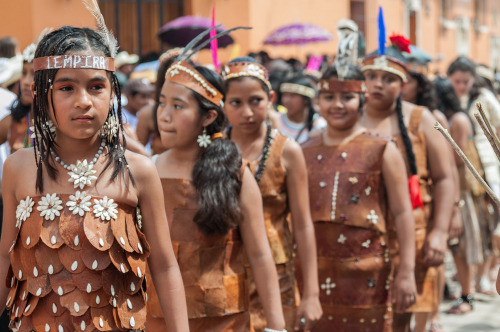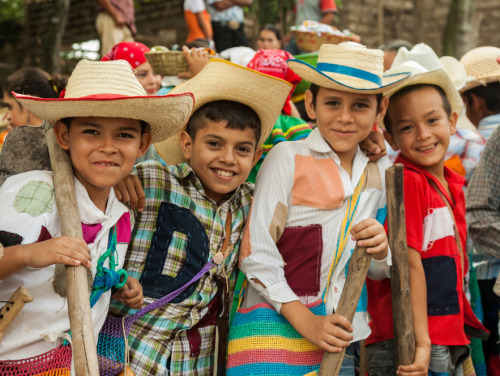#central america
Honduras: As Berta Cáceres Murder Trial Nears End, Will True Perpetrators Be Brought to Justice?
Eight men are on trial in Honduras for the murder of environmentalist Berta Cáceres, who was gunned down in her home in La Esperanza in 2016. A verdict is expected this week—but UC Santa Cruz historian and author Dana Frank said on Democracy Now! today that the trial has been flawed from the outset:
“The trial itself has been a travesty. The government prosecutors have not introduced or taken into account a vast range of evidence of text messages, seized computer messages, phone call records that implicate all kinds of people. And they’re not taking that into account. And also Honduran law says that the family of the victim has the right to review all of the evidence, has the right to be there in court, and that has been violated over and over and over again.
So we’re going to get some kind of verdict—probably somebody’s going to take a fall for this—but we should not in any way confuse that with justice for Berta. The fact that there is even a trial is mostly because of international pressure, including from the United States Congress and people like yourselves. There is going to be a lot of pressure to act like somehow justice has been done and we’re going to put this under the rug, sweep it under the rug.
And it’s really important to say that this is not going to be justice for Berta. This is going to be some kind of a—something for show, as they say in Honduras—and that we still have to call for justice for Berta and have the true perpetrators fully brought to justice.”
See the full interview here.
Post link


Guatemala.Pia Riverola



Antigua Guatemala. Luis Toscano

Boruca masker, Costa Rica, by Vincent Eschmann

Garifuna performers, Belize, by Belize Tourism Board

Pipil/Nahua women, El Salvador, by Jack Herrera

Honduran dancers, Honduras, by Oro Lenca
“Be who you are and say what you feel, because those who mind don’t matter and those who matter don’t mind.”
—Dr. Seuss
Post link
Costa Rica | Pura Vida
White-Headed Capuchin, Nicoya Peninsula, Costa Rica. © Michel Botman Photography, 2013.
Post link
A boiling jungle in Costa Rica
It is an area of dense rainforest, but the foliage, it emerges steam that comes from boiling pools. There is no shortage of areas where mud pot boils, and where the temperature becomes unbearable. Just below the surface of the nearby volcano activity is present, but just give some clues. Rincón de la Vieja in Costa Rica is nothing usual combination of geothermal activity covered by dense jungle, they say, is one of the most fascinating corners of the entire country.
Post link
View from Cerro Amigos
Cerro Amigos is the highest point (6,000ft) in the Monteverde reserve. On a clear day, you can see Arenal, the Pacific, and even across the border north to Nicaragua.
Photo: Dennis Tang
Post link
Rio Celeste Falls.
One of the northernmost of Costa Rica’s 26 national parks, Tenorio Volcano is home to the Rio Celeste and this waterfall.
Photo: Bruce Thomson
Post link
Rhinoceros beetle
Rhinoceros beetles can reach lengths of up to six inches and are found in multiple parks in Costa Rica. They are completely harmless—they can’t bite or sting. They may, however, freak you out.
Photo: Lyn Gatele
Post link
Scarlet macaws. This distinctive parrot species can be seen in a few of Costa Rica’s preserves. The pair shown above was photographed near Carara National Park.
Photo: Andrew Morrell
Post link
Explosion of 8 million flower petals over a town in central Costa Rica
…as part of a sony advert
Post link
Surfing Costa Rica
People have been traveling to surf Costa Rica for decades—there are breaks to hit all along the Pacific coast, as well as a few on the Caribbean side.
Photo: Darren Johnson
Post link
Green Lagoon, Irazú Volcano
Within one of the multiple craters at the summit of the volcano Irazú is this green lake, so colored on account of its chemical content.
Photo: Cristina Valencia
Post link
Cocoa beans, raw ingredient of Costa Rican chocolate.
Many small-scale chocolate producers operate in Costa Rica, offering tours of their working facilities.
Photo: Everjean
Post link
Monkey silhouettes
A pair of monkeys, mother and child, spotted at the luxury resort Hacienda Pinilla, on the Nicoya Peninsula.
Photo: Paul Kehrer
Post link
Agujitas River at Drake Bay
The relatively short Agujitas River rises in the forested hills of the Osa Peninsula and empties into Drake Bay just north of Corcovado National Park.
Photo: Trish Hartmann
Post link
Hummingbird
Costa Rica is home to over 800 known species of birds. This hummingbird was photographed in Alajuela.
Photo: Jon Fife
Post link
Playa Herradura sunset
Another Pacific sunset, this one taken in Playa Herradura, one of the country’s most popular tourist draws, located an hour west of San Jose.
Photo: Andrew Morrell
Post link
Monteverde Cloud Forest Reserve
Near the town of the same name, in the Tilarán Mountains, this reserve protects a 26,000-acre tract of virgin rainforest consisting of six different eco zones and tremendous biodiversity.
Photo: Thomas Frost Jensen
Post link
Laguna de Apoyo, Nicaragua. We drove down to the fresh water lake which sits in the crater of an extinct volcano. It was quiet, light rain, no one around except some locals fishing off floating logs.
The water was completely clear and we were so content we could have stayed there for hours.
Post link
Hundreds of thousands of cattle are trafficked each year through Central America and Mexico to meet the growing international demand for beef. Criminal networks have not missed this opportunity.
Post link
Hondurans in the town of Gracias partake in the annual Chief Lempira Day Festival
“The festival celebrates the Lencan leader Chief Lempira who managed to unite historically warring tribes as Spanish conquistadors descended in the 1500s. Chief Lempira ultimately cobbled together an anti-Spaniard force 30,000 strong which caused the Spaniards considerable trouble. The Lencan leader was eventually killed by the Spanish, however, and in his absence the popular uprising fizzled. But Chief Lempira’s legend lives on. The currency of Honduras is called the Lempira and he is still a hero to the Lencans. His annual festival day transforms Gracias, normally a sleepy town of 25,000, with a parade, fireworks, rock concerts, an air force fly over, even the President of Honduras helicopters in for the event.”
Source: http://trans-americas.com/blog/2012/05/gracias-honduras/
Post link
Hi guys! I was just thinking about how different Spanish vocabulary can be from region to region, and how so much of that comes from local languages. So, here are some regional words I’ve noticed in my travels that are pretty essential! (This is obviously not an exhaustive list of all words or regions, but I’ve chosen some of the most common words I’ve come across personally).
★From Nahuatl (Central Mexico)
aguacate| avocado [from ahuacatl]
atole | atole (traditional Mesoamerican drink) [from atolli]
cacahuate | peanut [from tlacucahuatl]
chamaco | young boy [from chamahuac]
chapulín | grasshopper [from chapol-in]
chayote | chayote (type of squash) [from chayotli]
chicle | gum [from chictli]
chipotle | chipotle (pepper) [from xipoctli]
comal | comal (type of flat pan used for making tortillas) [from comalli]
cuate | twin, buddy, friend [from cuatl*, which means serpent and twin]
elote | corn (on the cob) [from ēlō-tl]
esquite | corn (in a cup) [from izquitl]
escuincle | small child [from itzcuintli]
guacamole | guacamole [from ahuaca-molli]
guajalote | turkey [from wueh-xōlō-tl]
huarache | sandal; also a type of food, like an elongated taco. [from
kwarachi]
jícama | jicama (root) [from xicamatl]
jitomate | tomato [from xictomatl]
milpa | corn field [from milpa]
molcajete | kitchen mortar & pestle [from molcaxitl]
mitote | *it’s a dance, but can also mean ‘party’ or ‘disturbance’ or ‘racket’ [from mitotiqui]
nopal | cactus (edible variety) [from nopalli]
papalote | kite [from papalotl,originally ‘butterfly’]
petate | a woven matt [from petatl]
popote | drinking straw [from popotl]
pozole | a pre-Colombian stew [from potzolli]
pulque | pulque (alcohol) [from poliuhqui, originally ‘spoiled’]
tamal | tamale [from tamalli]
tecolote | owl [from tecolotl]
tianguis | market [from tianquiztli]
tlacuache| opossum [from tlacuatzin]
tocayo | namesake (person with the same name or named after) [from toca-yō-tl]
zacate | grass, weeds, lawn [from saka-tl]
★From Quechua (Inca Empire, primarily modern day Peru but also dialects in Ecuador, Bolivia, Argentina, Chile, and others in diaspora)
callampa | mushroom [from k’allampa]
cancha | soccer field [from kancha]
carpa | tent [from karpa]
chacra | small farm [from chakra]
charqui | jerky [from ch’arki]
Chile | Chile (country) [*one theory is that Chile was named for the Quechua word chiri meaning ‘cold,’ though this is unproven.]
choclo | corn [from choqllo]
chullo | hat with earflaps [from ch’ullu]
cochayuyo | an edible type of kelp/seaweed [from kochu=lake and yuyu=vegetable]
cura | priest [from kuraq]
guacho |cowboy [from wakcha(orphan) –> huacho (alone)]. *I think this is also likely related to waxo/wacho/wachito/guacho which in Chile I heard used to mean both ‘orphan’ or ‘young boy.’
guagua | baby, infant [from wawa]
guano | bird droppings, fertilizer [from wanu]
mate | a small gourd used to hold tea [from mati]
Pachamama | mother earth [from pacha= earth] *religious concept
poncho | poncho [*likely from punchu]
poroto | bean [from purutu]
quinua | quinoa [from kinwa]
tincar | to have a presentiment or feeling about something in the future [from tinku, which means ‘hit’ or ‘collision’]
yapa/llapa | a bonus, something free, a sale (in advertising) [from yapa=help, increase, something extra]
zapallo | a type of squash/pumpkin [from sapallu]
★ From Mapudungun (southern Chile & Argentina)
cahuin | mess, riot, disturbance [from cahuin(?)]
guata | belly [from huata]
huinca | foreigner; or, person who is not Mapuche [from wigka]
pichintún | a little bit [from pichintun(?)]
pilgua | a large bag [from pilguay]
pilucho | naked [from piluchi (?)]
pololo/a | boyfriend/girlfriend [from piulliu, which means ‘fly’ (insect) that circles someone]
ruca | a thatched hut [from ruka]
quiltro | street dog, mutt [from quiltro (?)]

